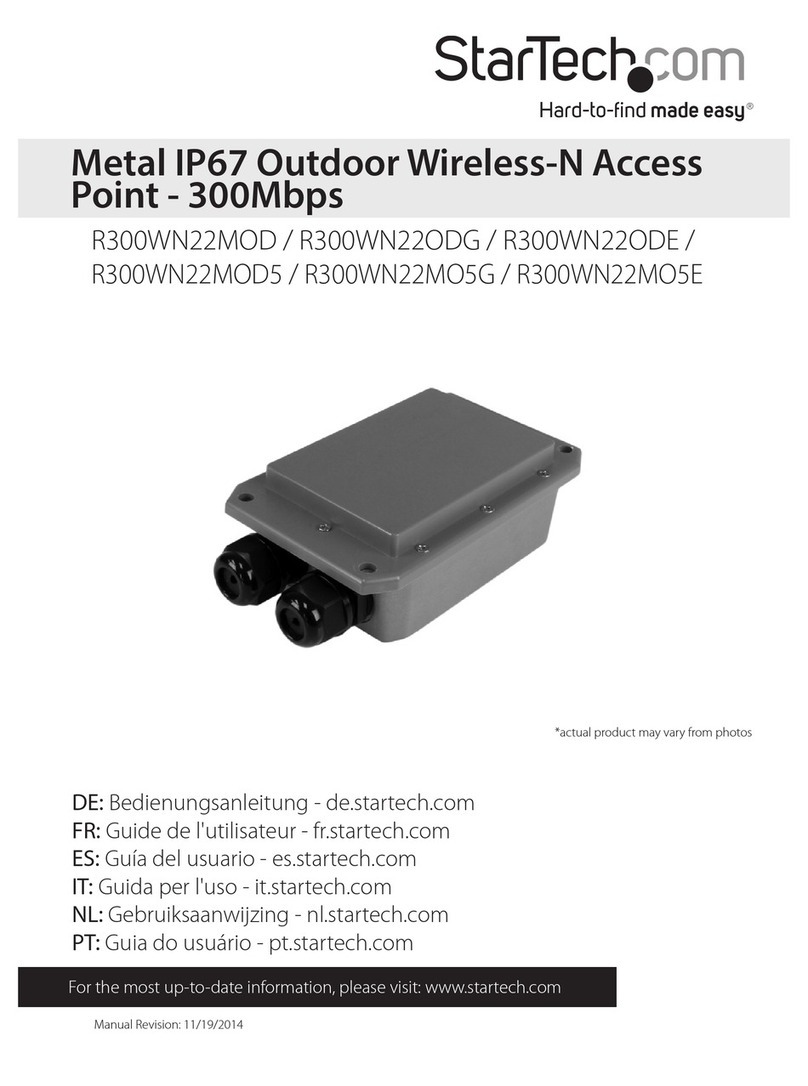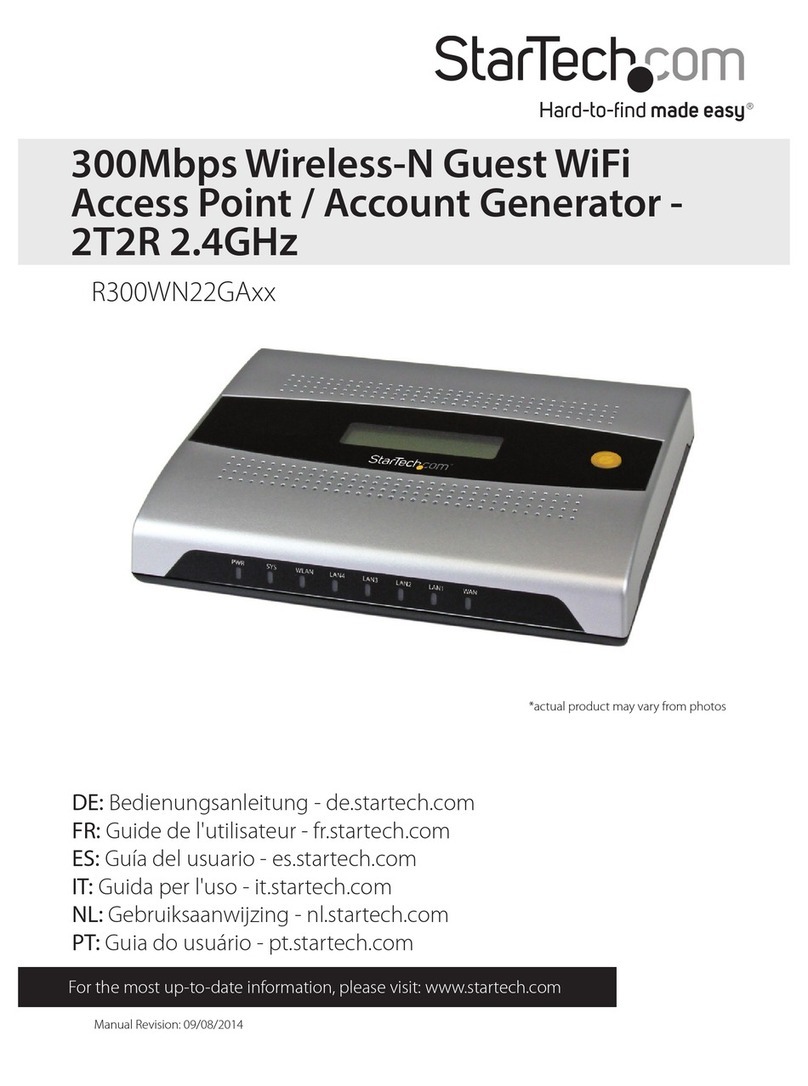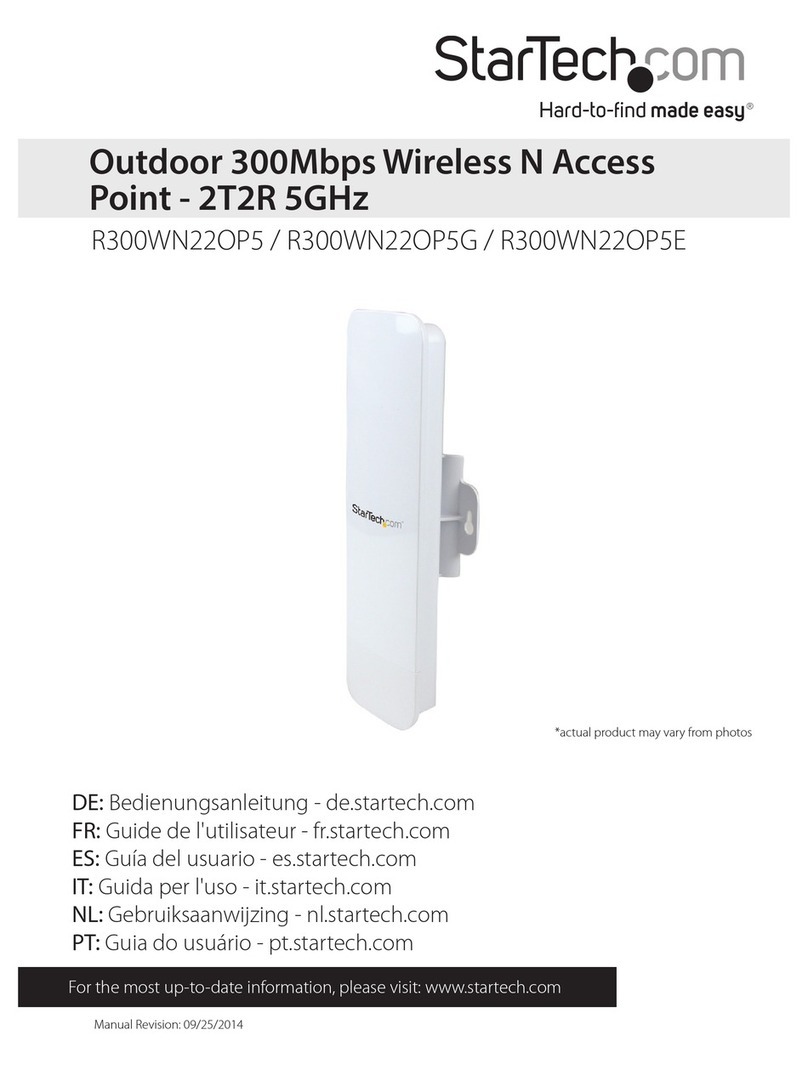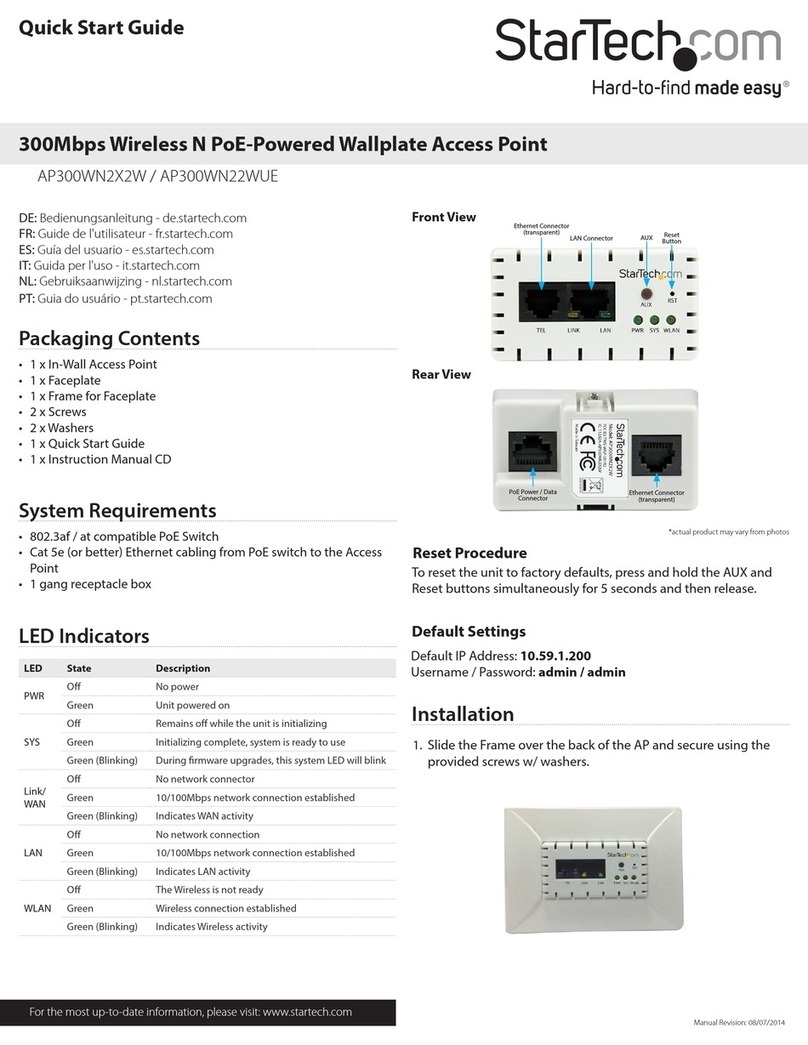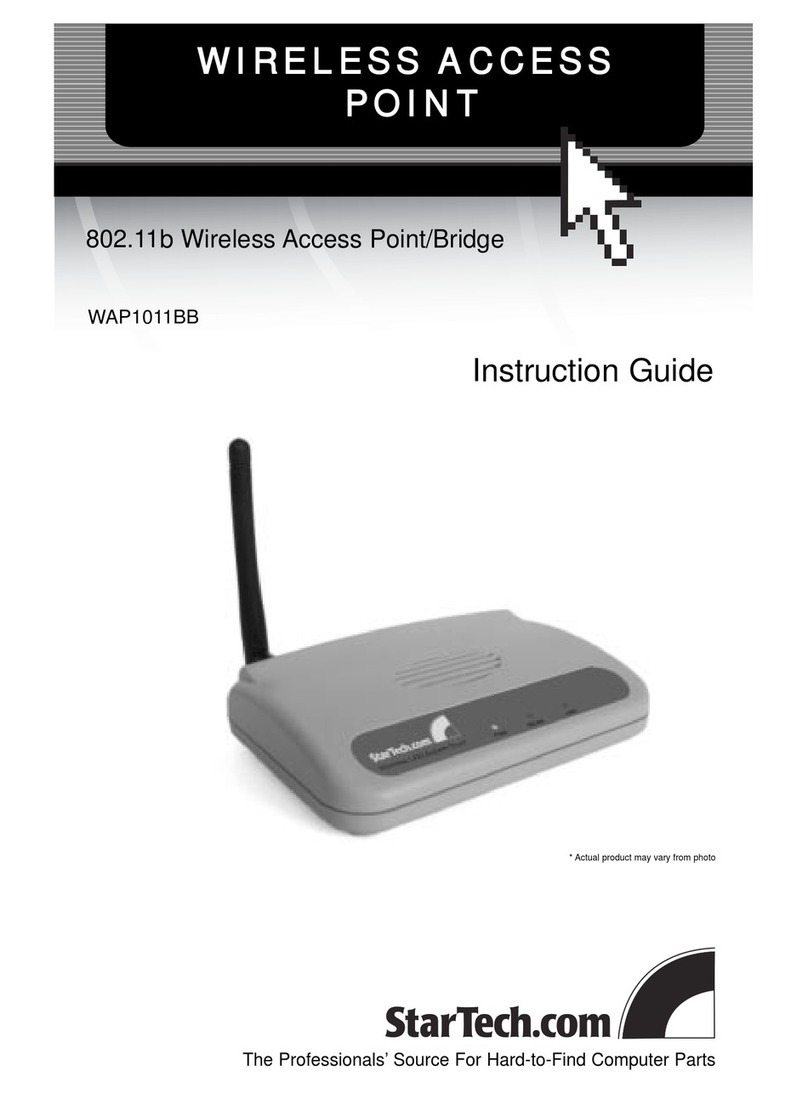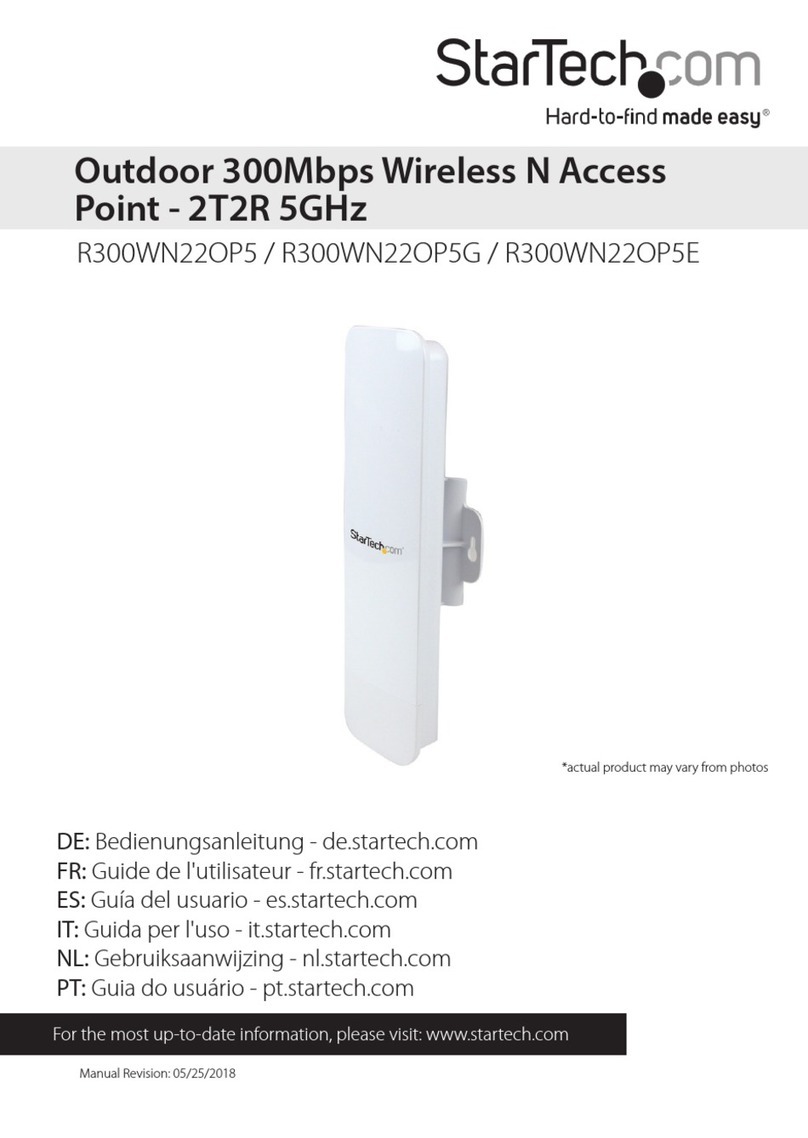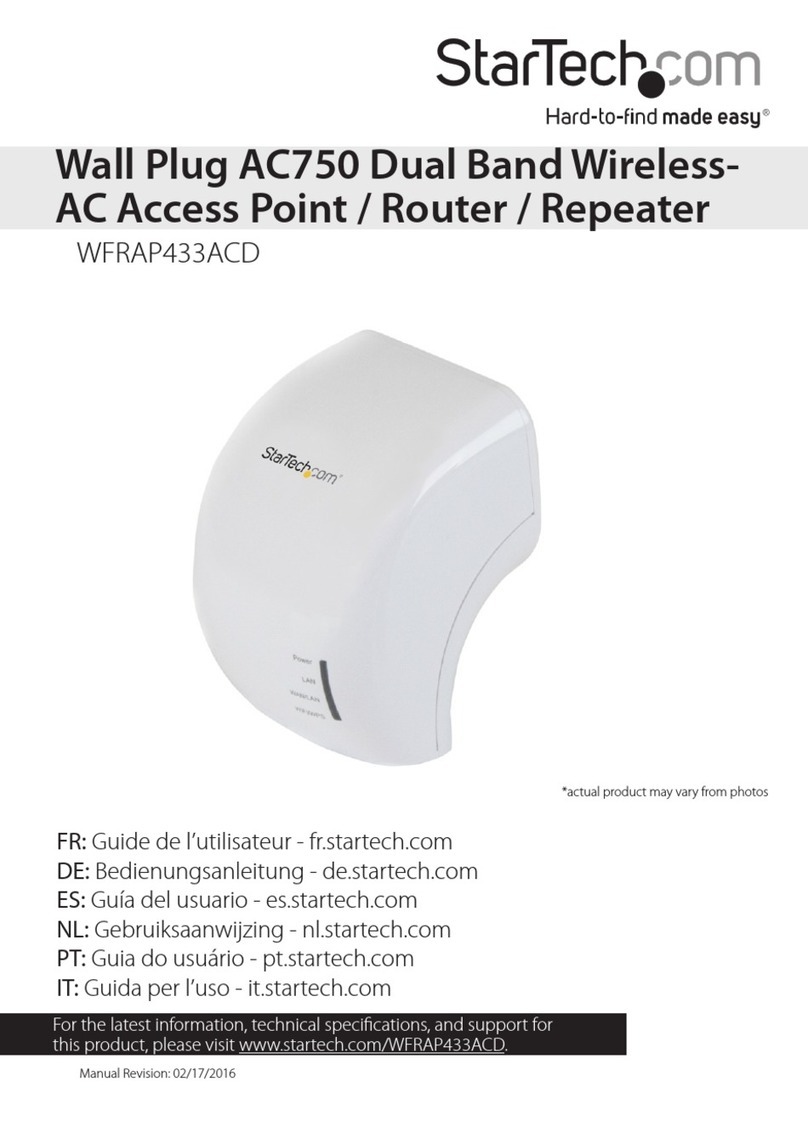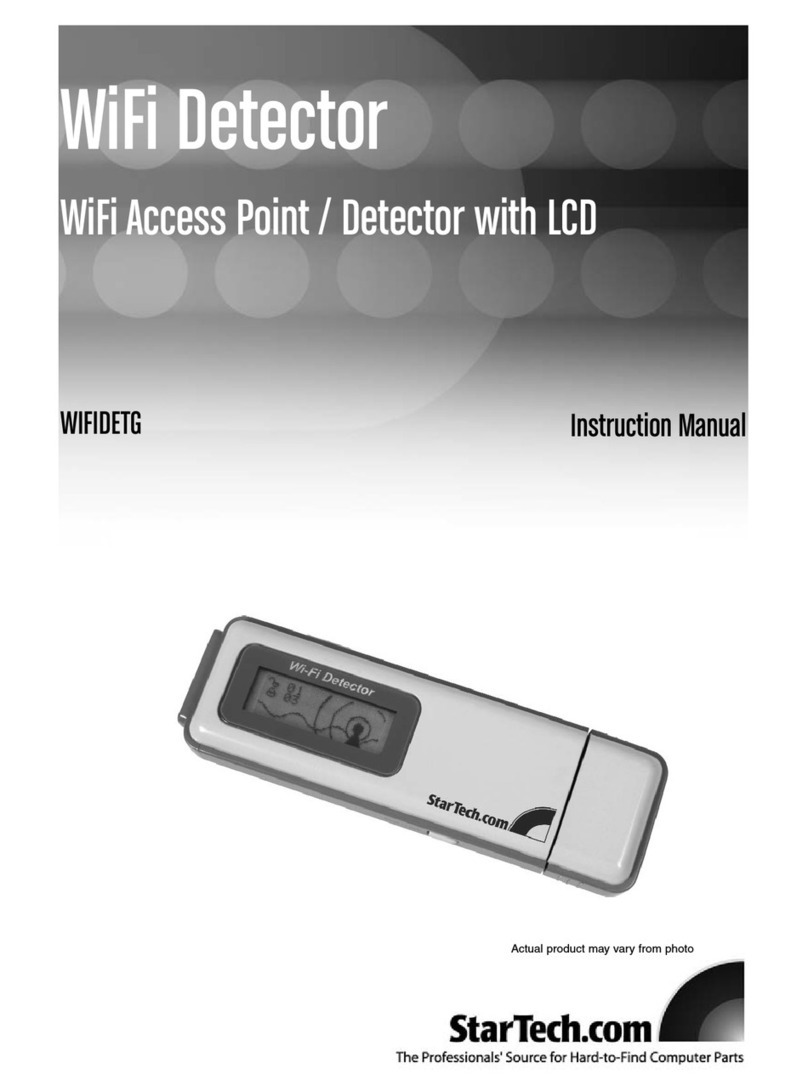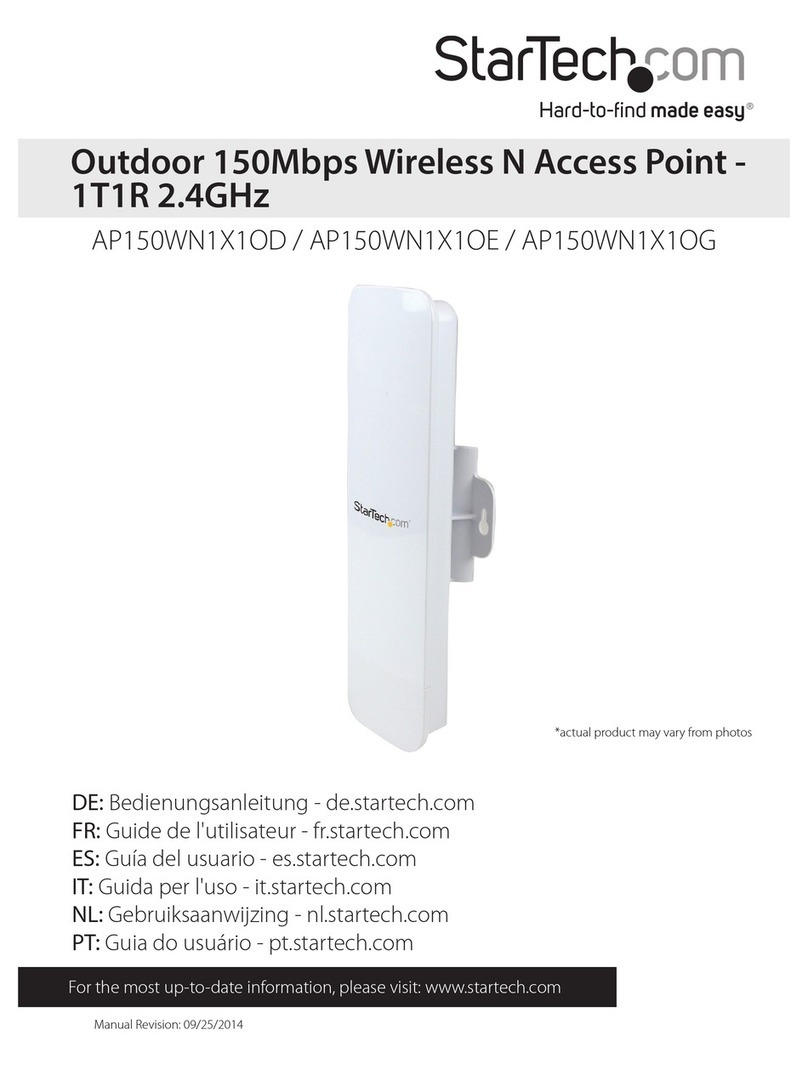Station Mode: Selectable between 802.11b mode and 802.11g mode (default). In
802.11g mode the WAP will use all common speeds up to 54 Mbits/sec., including those
speeds supported by older 802.11b devices, to connect to a wireless network. If 802.11b
mode is selected, the router will only attempt to use IEEE 802.11b compliant speeds to
access the network, up to 11 Mbits/sec. In general, you should only select 802.11b
mode to solve compatibility issues between the WAP and the wireless device to which
you are connecting.
MAC Cloning Mode: When enabled, uses the MAC address of the computer to which it
is connected to access a wireless network. A MAC address is a unique hardware
identifier that is part of the hardware of every device on your network. You will not need
to enable this option unless your network enables security that relies on MAC address as
part of its authentication scheme.
SSID is short for Service Set IDentifier, which is the name that the WAP will broadcast to
other wireless devices. This allows multiple wireless devices to co-exist on the same
network without confusion. The SSID can be up to 32 standard ASCII characters, and
can be any combination of your choosing as long there is not another wireless device in
the vicinity using that SSID.
Site Survey: When this button is pressed, the configurator will open the Site Survey
window (see previous page). You can join a wireless network by selecting a SSID from
the list and clicking Join. Note that the security settings (encryption type) on the WAP
must match the network you wish to join. For more information on configuring your
security settings, refer to section 4.0, “Configuring Security” on page 14.
Operation Mode: If Ad-Hoc is selected, the WAP will communicate directly with another
wireless device (i.e. computer) without using an access point, wireless router, or similar
device. If Infrastructure is selected, the WAP will join a wireless network using a
router/access point (default). In both modes, the network or device to be connected to is
selected from the Site Survey window.
Channel: Determines what channel the WAP will use to communicate with other
devices. A channel is a discrete radio frequency pre-approved by regulators. Devices
located within a single wireless network must all operate on the same channel. If you
are in Infrastructure operation mode (see above), the channel will be set automatically
by the WAP using the Site Survey tool. If you are operating in Ad-Hoc mode, you must
manually select the correct channel to use.
Security: Sets the level and type of encryption used for the wireless connection. For
more information on configuring your security settings, refer to section 4.0 “Configuring
Security”.
Preamble Type: This setting determines what proportion of a wireless transmission
segment (frame) will be used for non-data requirements such as error correction. The
default setting, Auto, allows the WAP to automatically switch between settings based on
the quality of the connection. You should only adjust this setting if specifically required to
connect to another device.
Transmit Rate: Forces the WAP to use a particular connection speed for a wireless
connection. The default (and recommended) setting, Auto, allows the unit to negotiate
the fastest possible speed automatically. Selecting another value from the list will force
the access point to use that speed only. Note that the wireless devices to which you are
connecting must support the speed you select, and that varying levels of interference
Instruction Manual
7
